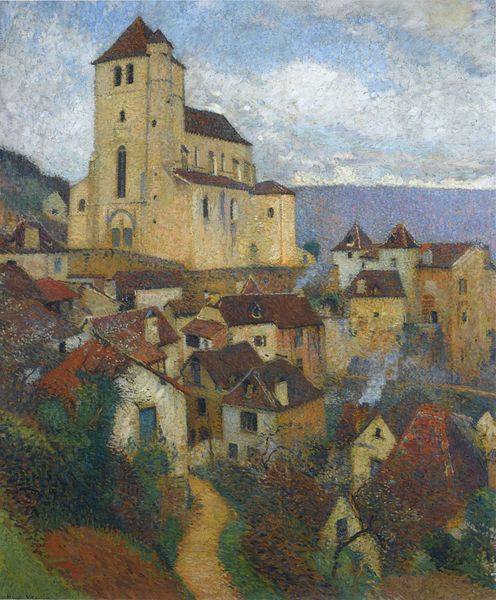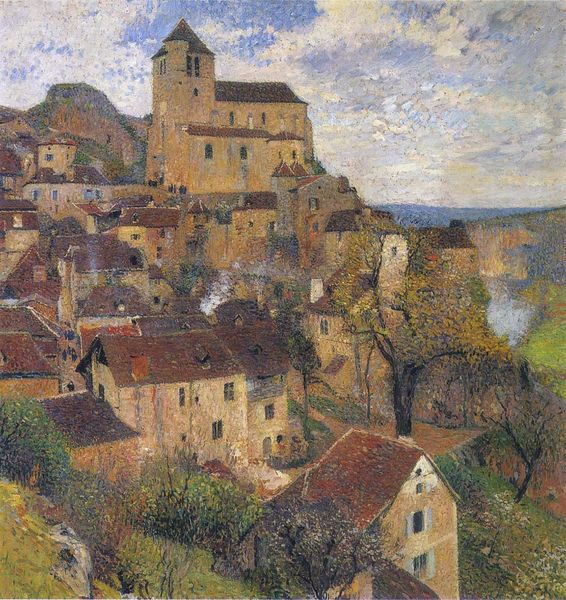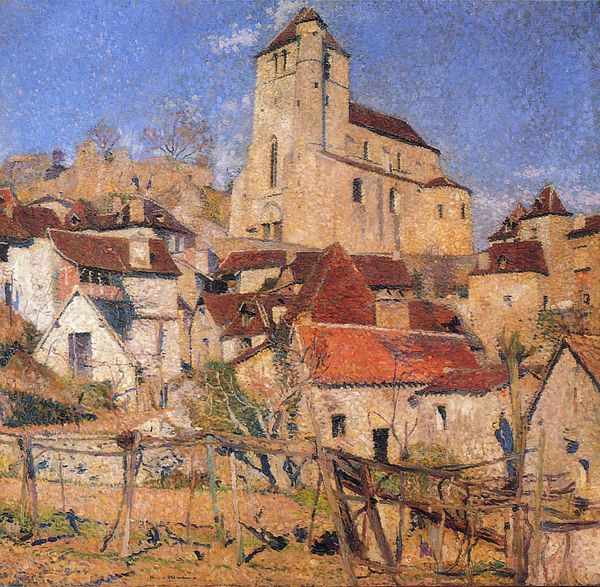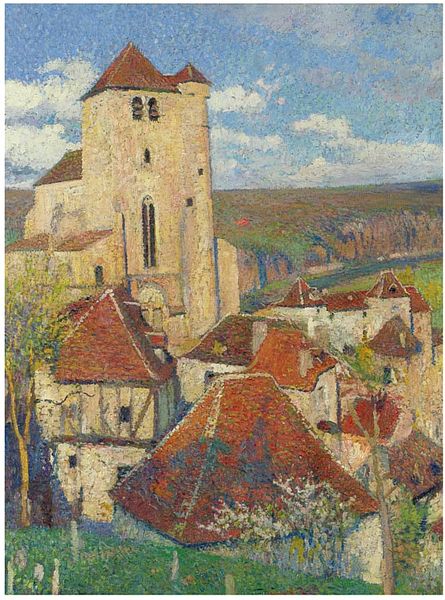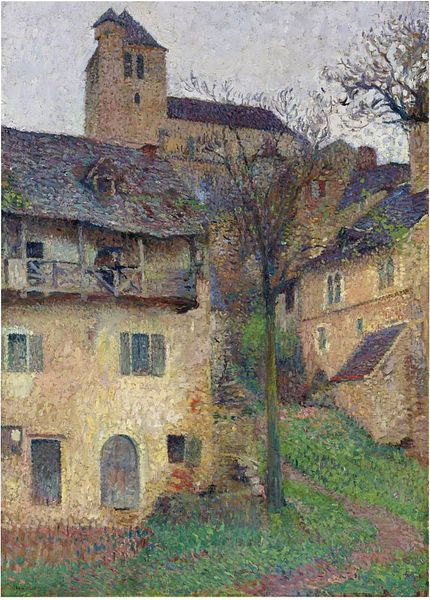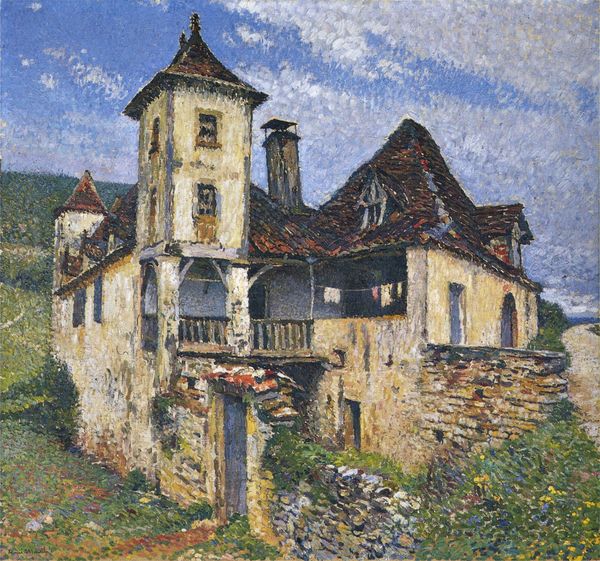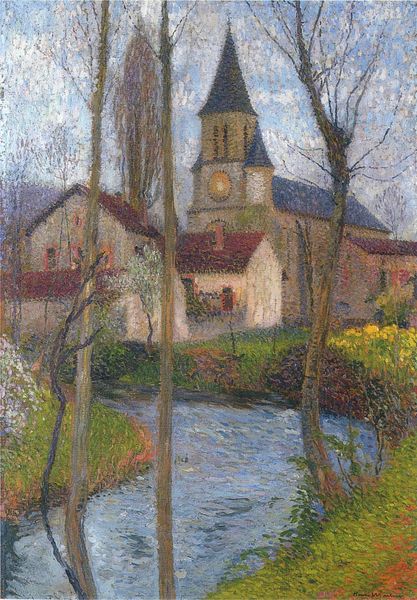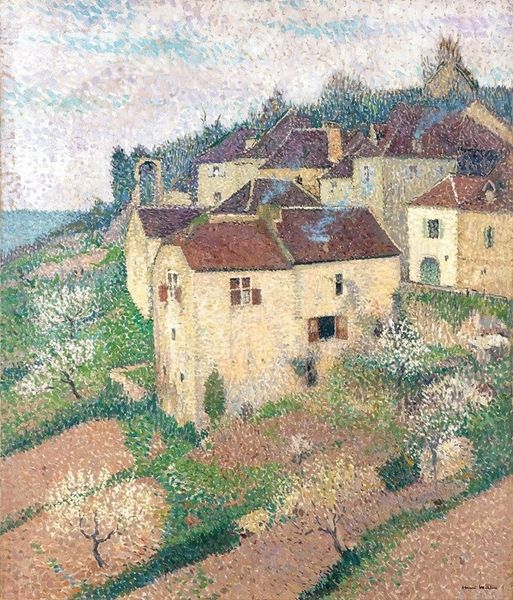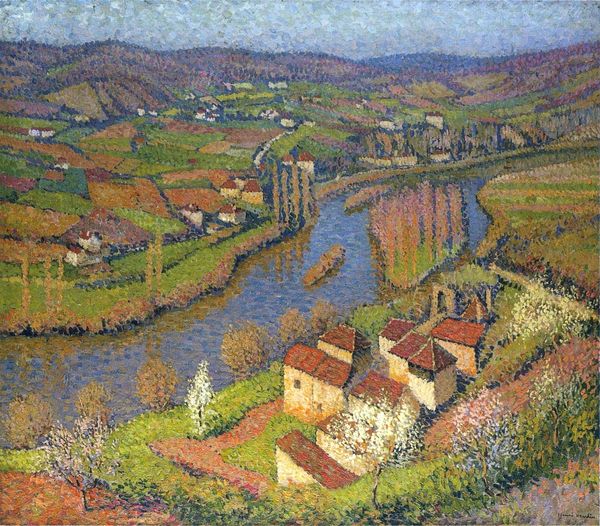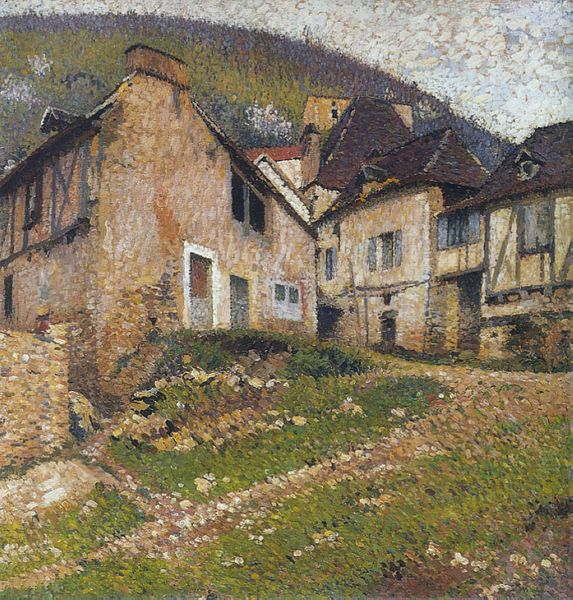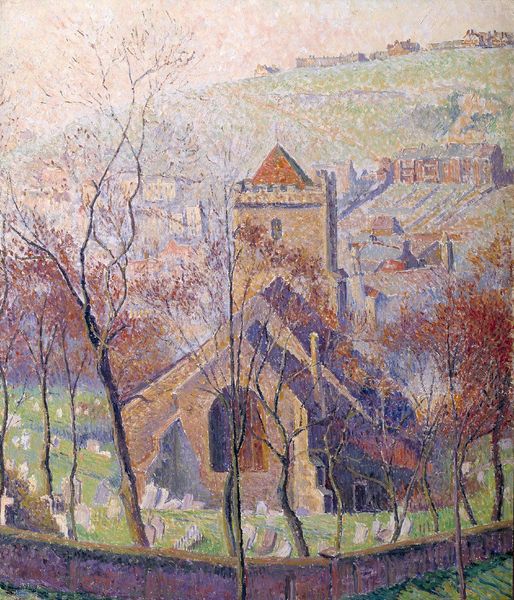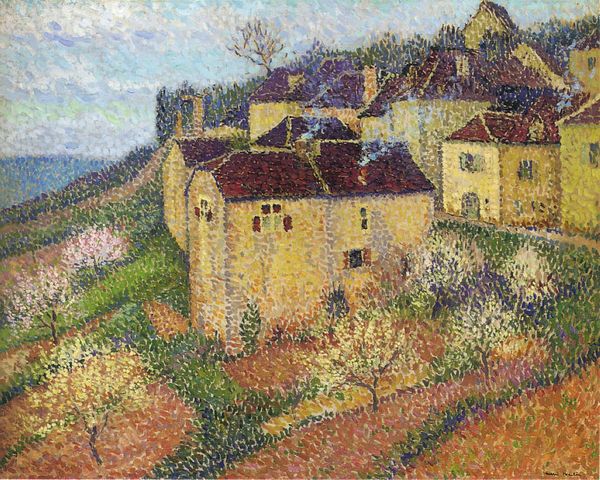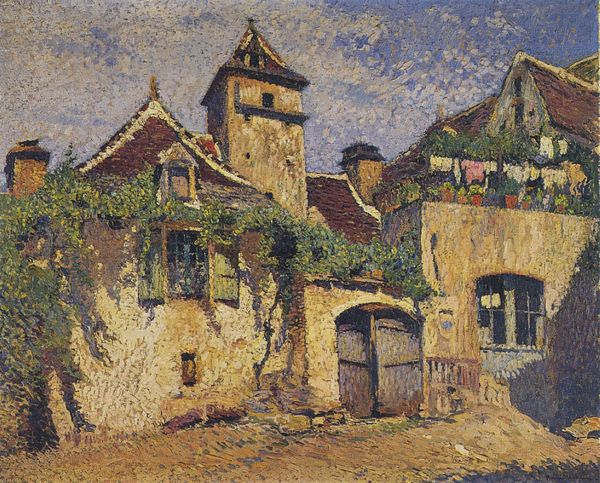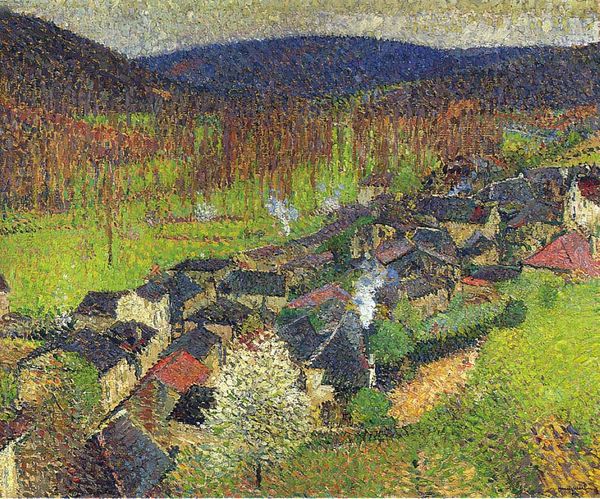
painting, oil-paint, architecture
#
painting
#
impressionism
#
oil-paint
#
neo-impressionism
#
landscape
#
impressionist landscape
#
oil painting
#
mountain
#
arch
#
cityscape
#
architecture
Copyright: Public domain
Editor: Here we have Henri Martin's "Saint Cirq Lapopie", an oil painting that I believe is Impressionist, though some say it also carries a Neo-Impressionist air. I'm struck by how the brushstrokes, while small, give a palpable sense of the town's textures. What draws your eye in this piece? Curator: I’m immediately drawn to the *application* of the paint itself. Look closely—notice the distinct, almost separate, dabs of color? This isn't just about representing the *look* of the village. It’s about a calculated, almost industrialized process. Consider the socio-economic context of late 19th-century France. What kind of labor powered these kinds of picturesque hilltop villages? And how does the artist’s technique mimic—or perhaps even comment on—the increasingly mechanized means of production that were transforming the countryside? Editor: That’s a fascinating point, I hadn't considered the brushstrokes as connected to industrial processes in any way! I was focused on the light and color, like a classic Impressionist reading. Curator: Light and color are, of course, integral. But let's consider how those elements themselves are rendered through a distinct material process. Notice, also, how the painting flattens perspective, pushing the viewer up against the architectural surfaces as if experiencing it viscerally. What about the red tile roofs and the monumental church? How do you see the materials of this painting reflecting and interacting with the materials depicted within? Editor: Now that you mention it, the density of the paint mimics the solidity of the stone and tile! I’m starting to think differently about the relationship between the artist’s labor, the materials they used, and what the artwork depicts. Curator: Precisely! By considering the painting's material construction, and its relationship to social and economic structures, we can unravel its layers of meaning. It transforms how we see labor. Editor: This definitely shifted my understanding. I was so focused on the aesthetics. Curator: Seeing art as the product of material interactions and socio-economic circumstances is essential for thinking critically about the values they communicate.
Comments
No comments
Be the first to comment and join the conversation on the ultimate creative platform.
